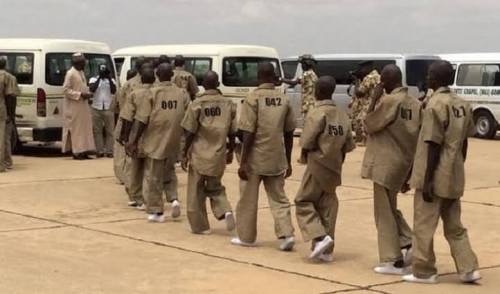FULL STEPS: How to become Olubadan of Ibadan

Typically, the ascension to the Olubadan throne is predictable. An Olubadan must climb 23 chieftaincy steps from either of two lines: the Civilian and the Military.
But it is its predictability and orderliness that ranks it among the most peaceful and unique ascension protocols anywhere.
According to the Olubadan chieftaincy declaration, succession and elevation to the throne are achieved through promotion with the most senior chief after the King taking his place in the event of his demise.
The declaration recognises two ruling lines to the throne of Olubadan: Egbe Agba (civil) and Balogun (military), from where Olubadans are appointed on a rotational basis to occupy the stool.
The next to the Olubadan and most senior on both lines are the Otun Olubadan and Balogun. According to the arrangement, whoever occupies the Olubadan seat must have passed through about 34 stages to emerge as a member of the Olubadan-in-Council
Oba Olakulehin, who is next in line to the throne, hails from Ibadan North from the Okugbaja family in Ita Baale area of Ibadan.
Exposed!! Popular Abuja doctor revealed how men can naturally and permanently cure poor erection, quick ejaculation, small and shameful manhood without side effects. Even if you are hypertensive or diabetic . Stop the use of hard drugs for sex!! It kills!
He served in the Nigerian Army and also won the Federal House of Representatives elections under the Social Democratic Party (SDP) in the third Republic.
He will be crowned as the 43rd Olubadan upon the approval of the state governor, Seyi Makinde.
According to tradition, the next in line to Olakulehin after he is crowned is High Chief Rashidi Ladoja, who heads the civil line as Otun Olubadan of Ibadan.
By default, every male child in Ibadan is a potential Olubadan. To become one, a prospect, starting from the mogaji step (family head), has to ascend through series of stages, and by the time they become Olubadan council-in-chiefs, they are already in their seventies. The ascension from one stage to another is informed by a vacuum following the death of a person up the ladder.
To shorten the length, the Oyo State Government, in a white paper on the Review of the Existing Olubadan of Ibadanland Chieftaincy Declaration, published in a government gazette in August 2017, reduced the length of the ladder to 11 steps on the Otun Olubadan (civilian) line and 12 steps on the Balogun (military) line.
If one dies on the Otun side, the Balogun produces the next Olubadan.
The promotion in the line of Otun Olubadan follows this pattern: From Jagun – Ajia – Bada – Aare Onibon – Gbonnka – Aare-Egbe Omo – Oota – Lagunna – Are-Ago – Ayingun – Asaju – Ikolaba – Aare-Alasa – Agba-Akin – Ekefa – Maye – Abese – Ekaarun Olubadan – Ekerin Olubadan – Ashipa Olubadan – Osi Olubadan – Otun Olubadan, before emerging as Olubadan.
For the Balogun line, similar steps follow this pattern: Jagun – Ajia – Bada – Aare Onibon – Gbonnka – Aare-Egbe Omo – Oota – Lagunna – Are-Ago – Ayingun – Asaju – Ikolaba – Aare-Alasa – Agba-Akin – Ekefa – Maye – Abese – Ekaarun Balogun – Ekerin Balogun – Ashipa Balogun – Osi Balogun – Otun Balogun – Balogun, before eventual emergence as Olubadan.




